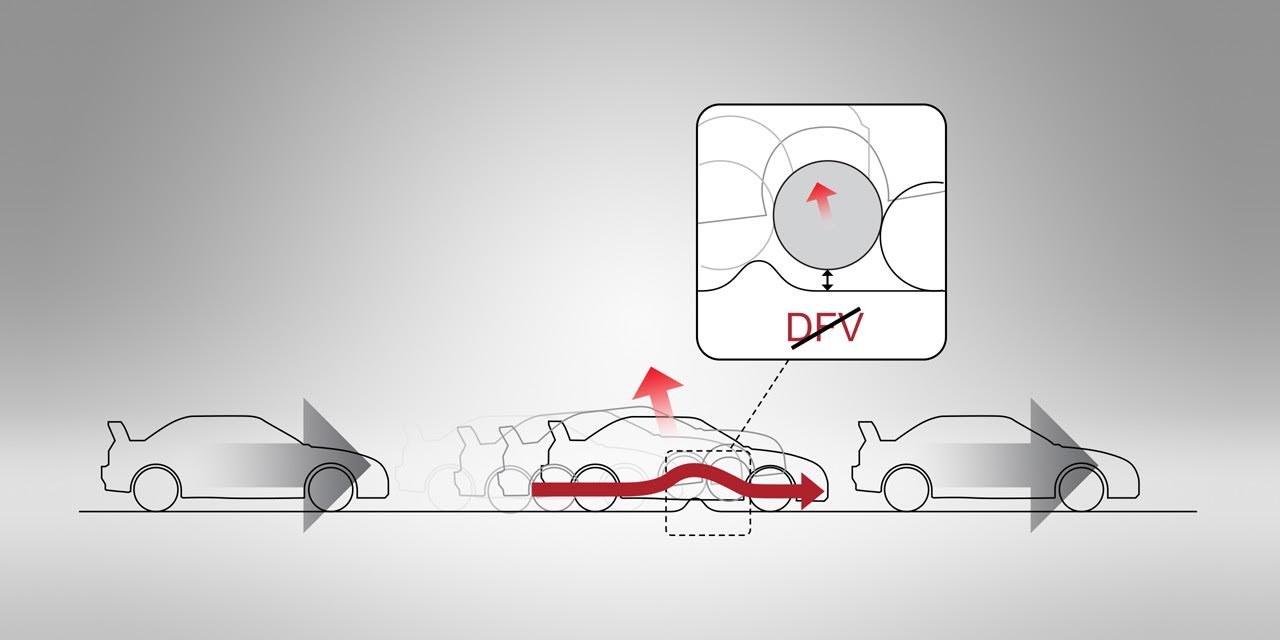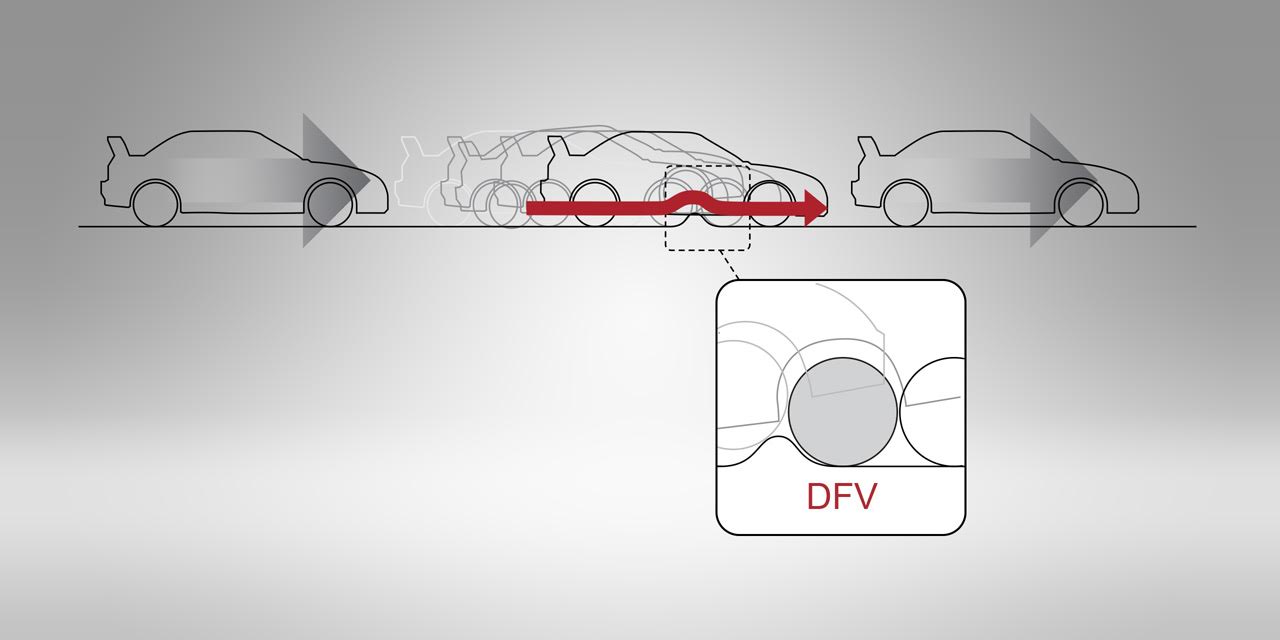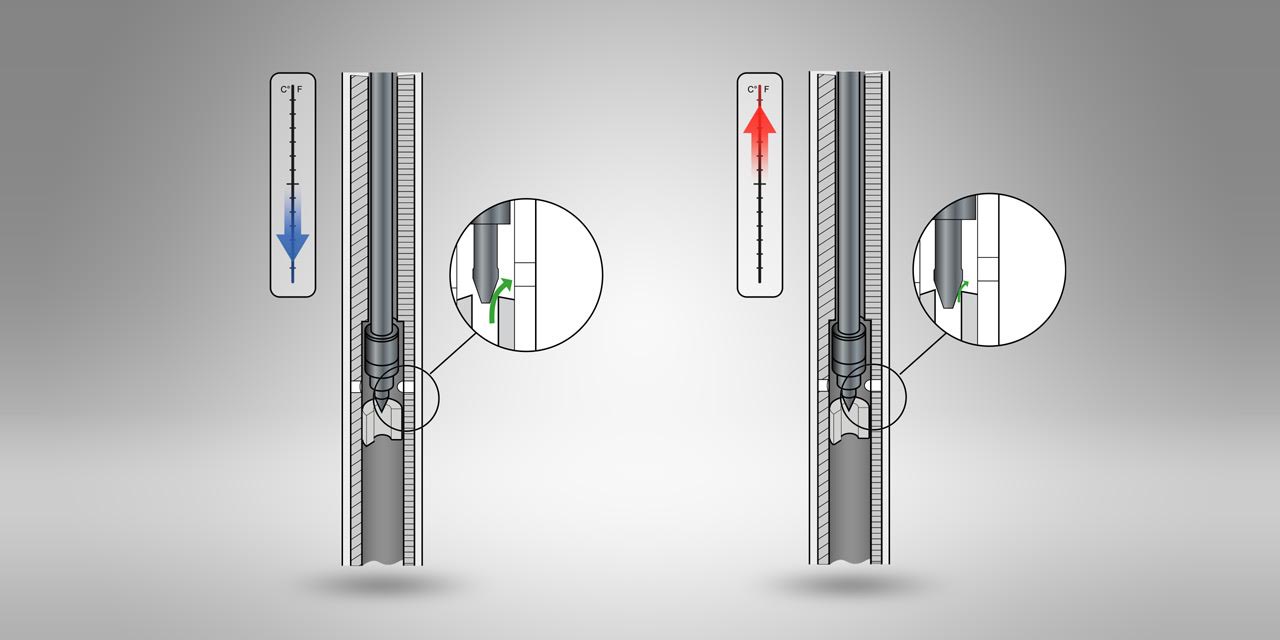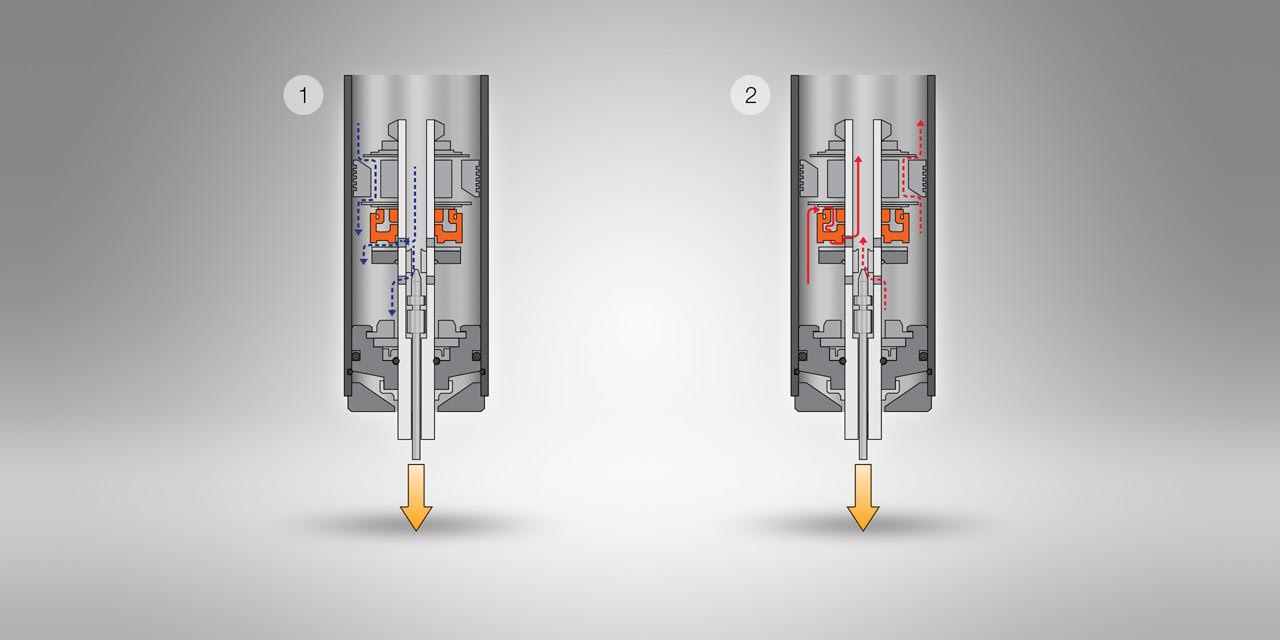
In-Depth Testing: Ohlins Road & Track Coilovers for 992 Carrera
For many years Flat 6 Motorsports has recommended the Ohlins Road & Track Coilover system for a variety of Porsche applications. Ohlins delivers a world-class coilover system that balances performance from the street to the track. Ohlins' patented Dual Flow Valve (DFV) technology delivers uncompromised performance. It's unique design gives fine tuning adjustment for low speed driver's inputs while providing a bypass for high speed rebound inputs (think bumps and potholes) that gives Ohlins a compliance advantage over it's competition.
Background on the DFV (courtesy of Ohlins USA):
Figure 1: (Compression flow) At low shaft speeds, oil flows mostly through the shaft jet bleed (lower dotted arrow). At higher shaft speeds, oil flows mostly through the compression ports in the piston (upper dotted arrow). At very high shaft speeds, or during sudden shaft accelerations, oil can also escape through the compression ports in the DFV, increasing comfort.
Figure 2: (Rebound flow) At low shaft speeds, oil flows mostly through the shaft jet bleed (lower dotted arrow). At higher shaft speeds, oil flows mostly through the rebound ports in the piston (upper dotted arrow). At very high shaft speeds, or during sudden shaft accelerations, oil can also escape through the rebound ports in the DFV, maintaining tire contact with the road.
Because DFV opens more quickly and easily on minor road imperfections, ride comfort is surprisingly supple and more akin to an OEM strut than a coilover set-up. Over undulating surfaces, the compliancy of the R&T units allows the car to crest bumps and pot-holes, whilst still keep stable and in control. Traction is always maintained at its optimum level. When comparing suspension, why settle for second best?

Figure 3: (Vehicle – no DFV) Without DFV the oil can not flow through the piston quickly enough on the rebound stroke after hitting a bump, so the tire is not able to stay in contact with the road.

Figure 4: (Vehicle – DFV technique) The DFV valve opens, letting the oil flow quicker through the piston on the rebound stroke after hitting a bump, enabling the tire to stay in contact with the road.
When adjusting ride height on coilover units, it’s worth comparing how it’s done. On many inferior designs, height is adjusted by raising or lowering the lower spring platform. This has the effect of compressing or extending the spring, which can limit the suspension travel that may cause topping out. The Öhlins method is to leave the spring seat in its perfect position, whilst the lower flange spins easily on the threaded body, to allow you to adjust with absolute precision whilst maintaining the perfect characteristics that we took so long to design in! Once you’ve set it all up, the adjuster simply locks off to maintain your exact settings.
Dampers will get hot. That’s one thing that you can be sure of. As the piston moves within the damper, it generates friction – and therefore, heat. Although we can’t stop heat, we can deal with it, and this is yet another way that Öhlins differs from the competition. As the heat increases, the viscosity of the damper fluid can change, altering the car’s handling characteristics. Our unique needle bleed valve expands with temperature, closing the gap that the fluid travels through, maintaining a consistent damping rate. The best thing of all? You won’t even notice! All you’ll feel is that the car responds consistently, lap after lap, turn after turn. Allowing you to concentrate on braking points and apexes whilst the Öhlins technology takes care of the damping.

Figure 5: Thermal Expansion
These kits all work well ‘out of the box’, but there’s still plenty of adjustment for you to set things your way. You like stiff and reactive? Or soft and forgiving? It’s all there. Too much low speed rebound damping can have an adverse effect on grip, so the easily accessible adjuster at the base of the Öhlins units allows small, but positive increments of fine tuning, so you can take into account every single parameter. Sounds complicated? Nothing could be further for the truth. Just a few clicks either way from our factory settings will soon have your car responding precisely to your inputs and driving style.
Most of the Road & Track McPherson struts also feature camber adjustable upper and lower mounts to give you the possibility to fine tune your wheels for the right occasion – whether you want to go for a ride in your neighborhood or take your car for a spin at the track on a weekend.
Flat 6 Motorsports visits Ohlins USA:
We had the opportunity to take our Project 992 Carrera T to Ohlins USA's facility in Hendersonville, NC. We often visit vendors to learn more about their products and methods. However, this visit provided a special opportunity. We were able to utilize their Shake Rig to test and validate the performance of the Road & Track system.
The Shake Rig is an impressive testing instrument. It provides up to 7 points of simulation for various road or track conditions. They can even simulate various race tracks! Many motorsports teams test with Ohlins to dial in plans and settings for competition. The Shake Rig uses a host of sensors and accelerometers to capture data relative to road inputs.

For our testing, we simulated vertical forces at different speeds (2 inches per second, 4 inches per second and 6 inches per second). This baseline test simulates different road forces one would experience on a track. With the help of their test engineers, we tested a variety of settings with the adjustable dial on the coilovers. This controls the effective compression and rebounding of the shock.
Testing different settings allows the engineers to find different levels of grip. The 992 T weighed in at 3,204 lbs with fluids and about 1/3 tank of gas (our T has the extended range tank). Of course, like all 911's, majority of the weight is in the rear of the vehicle (~62%). After adding sand bags to simulate driver's weight, the engineers ran through a series of tests.







